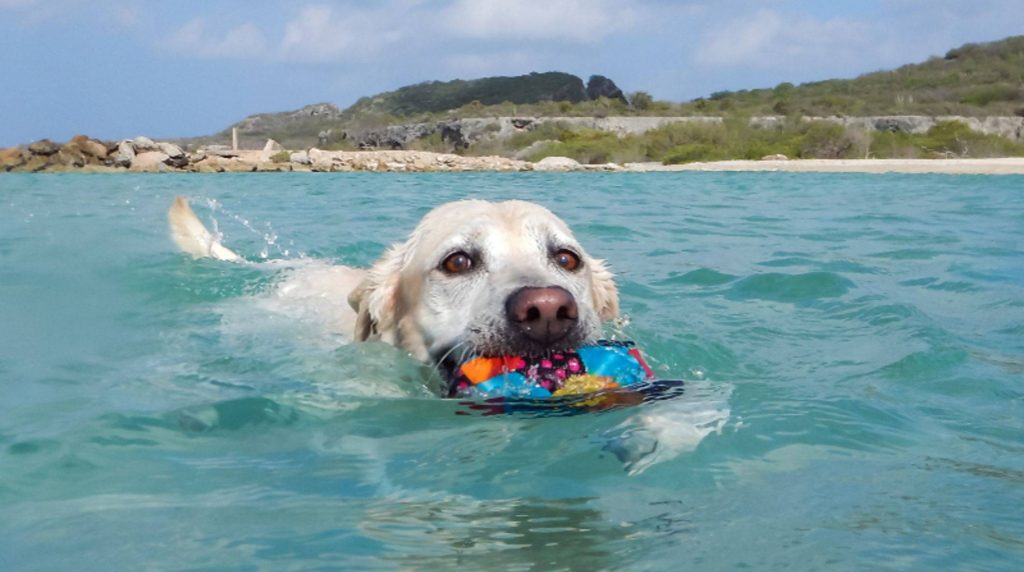Waterwork with the dog can be both a fun and extreme rescue sport. The latter requires professional training with your four-legged friend. However, the following is about water work as a leisure activity and explains what dog sport is all about.

The roots of water work with dogs can be found in Newfoundland. Dogs like the Newfoundland dog were already being used therefor fishing 200 years ago. Dogs were an integral part of fishing, whether pulling in nets and boats or rescuing people and objects that fell into the water. Today, water work with our pet dogs is more about healthy, fun, and meaningful activity.
This means water works with the dog.
Waterwork is part of the training of rescue and hunting dogs for emergency response. The examination regulations include retrieving, pulling, distance swimming, recovering from drowning, and other disciplines. For recreational use, water work can be about very similar things. If your woof likes the water, games like fetch are great to play in cool water. Pulling surfboards in the water or swimming itself is great fun for many dogs. The highlight: Waterwork is healthy and has a beneficial effect on the condition, muscles, joints, and the mind.
Which dog breeds are suitable?
In principle, every dog is capable of water work. However, certain dog breeds are more miniature or fond of jumping into the water. The desire to do so does not depend on the species but the individual. Labrador, Golden Retriever, Landseer, Leonberger, or even the Newfoundland dog are well suited for water work, among other breeds. The dog’s size only plays a significant role in the truest sense of the word if you and your four-legged friend want to practice the sport professionally. If you are flirting with it, contact associations that do water rescue work, such as the DLRG, the Red Cross, or the DVG.
Requirements for water work with the dog
If you want to train your dog in water work, you should start slowly and see if your dog wants to do it. In general, swimming and contact with water are not for every dog - if your furry friend is afraid, don’t force it. In addition to the ability to swim and the desire for water, prerequisites for water work are good basic obedience and a sufficiently good physical condition. Necessary: You should also be a good swimmer and be able to rescue your dog from the water in an emergency.
Training water work with the dog
Start with light exercises at the dog beach, such as fetching in the water. It is best to go in yourself and hold a dummy a little underwater – this will teach your dog to put his head underwater, which is essential for water work. Later, just like on land, you can throw the dummy in the water and instruct your dog to retrieve it. Jumping into the water is also practiced. Lead the way and lure your dog behind. You can practice jumping into the water from different heights, such as the bank, jetty, or boat. In the video, you can see how a water-savvy dog bravely jumps from the ship into the sea to play with dolphins:
safety first
Despite your dog’s basic fitness level, it should never go into the water “cold.” Warm-up your dog on land before heading into the water. Also, no dog should swim with a full stomach – there is a risk of death. You can find more tips on swimming, among other things, in the guide “Beach holidays with dogs: bathing rules.” A safe environment is also essential: a lake with lots of plants on the shore area or a river with boats passing by, for example, is not suitable for water work with the dog because it is too dangerous here.









